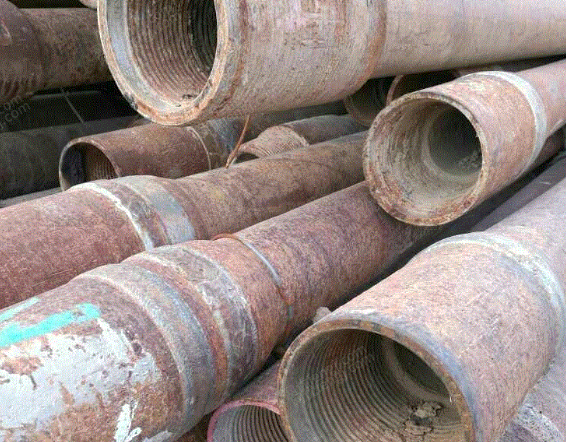
What Methods Should be Used to Prevent Corrosion of Oil Pipelines?
The main types of corrosion in pipelines are divided into two types:
1. Electrochemical corrosion
Since oil and gas wells contain corrosive gases such as CO2 and H2S, electrochemical corrosion is prone to occur in underground oil and gas pipelines. Therefore, electrochemical corrosion is relatively common in pipelines.
2. Local corrosion
Local corrosion is a type of corrosion that is particularly serious for pipelines. Common types of local corrosion in pipelines include: stress corrosion cracking, crevice corrosion, galvanic corrosion, hydrogen corrosion, corrosion fatigue, etc.
Regarding the corrosion problem of oil pipelines (such as OCTG casing pipe and drill pipe), since the main corrosion principles are electrochemical corrosion and local corrosion, the anti-corrosion effect of general coatings is certainly not optimistic. The working environment and working nature of petroleum determine the difficulty of coating, high cost and inconvenient operation. If you want to extend the service life of your pipelines, you need to maintain them regularly.

So how to prevent oil pipeline corrosion?
1. The inner wall is coated with anti-corrosion layer.
Commonly used coatings include amine-cured epoxy resin and polyamide epoxy resin, with a coating thickness of 0.038~0.2 mm. In order to ensure that the coating is firmly bonded to the pipe wall, the inner wall of the pipe must be surface treated.
2. Anti-corrosion coating on the outer wall.
Applying paint evenly to the surface of the rust-removed metal pipeline to isolate it from various corrosive media is one of the basic methods of pipeline anti-corrosion. In modern times, pipeline anti-corrosion coatings increasingly use composite materials or composite structures. These materials and structures must have good electrolytic performance, physical properties, stable chemical properties, and a wide temperature adaptation range.
3. Plating and coating.
The coating of steel is formed by plating a layer of metal on the surface of steel using techniques such as electroplating, spraying, and heat. The coating is divided into two types: anode coating and cathode coating. The potential of the coating is more negative than the potential of the base metal, which is an anode coating. The main principle is the cathodic protection method of sacrificial anode. This method is especially suitable for metals with matte surfaces. Another type of plating with a higher potential than the plated layer is a negative plating. This kind of coating has higher requirements for the metal to be plated and needs to be complete, otherwise it will easily accelerate the corrosion of the metal.
4. Corrosion inhibitor.
A substance that can reduce or even inhibit the corrosion rate by adding a small amount to the corrosive substance. The corrosive agent is easy to apply, quick to produce results, and has good economical results.
These methods are common practices that are more suitable for oil pipeline anti-corrosion. Of course, pipeline anti-corrosion can also be used:
1. Cathodic protection method with impressed current.
A method of using external current to obtain cathodic polarization current to prevent metal corrosion.
2. Sacrificial anode protection.
A method of preventing metal corrosion by connecting it to a metal material with a more negative potential than the protective metal. The characteristic is that no external current is required but the anode must be a non-ferrous metal with a more negative potential.
3. Suppression of galvanic effect.
A potential difference occurs when two different metals are immersed in an electrolyte solution. If the two come into contact, electrons from the metal with lower potential will flow toward the metal with higher potential. Therefore, an oxidation reaction occurs on the anode metal surface with a lower potential and a reduction reaction occurs on the cathode metal surface with a higher potential. During this process, the corrosion of the anode metal is accelerated, a phenomenon called the galvanic effect.
Read more: Common Anticorrosion Methods for Offshore Oil Casing Pipe


